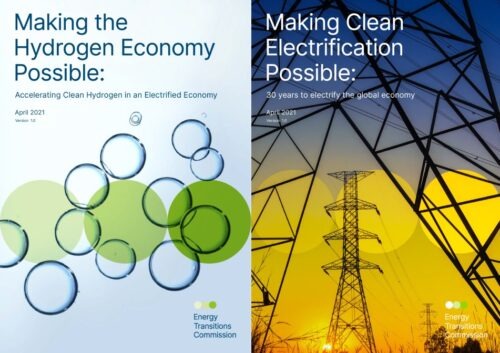The ETC’s Commissioners – more than 45 leaders from global energy producers, energy industries, financial institutions and environmental advocates – including ArcelorMittal, Bank of America, BP, Development Research Center of the State Council of China, EBRD, HSBC, Iberdrola, Ørsted, Shell, Tata Group, Volvo Group and the World Resources Institute – endorse the feasibility of achieving a net-zero greenhouse gas emissions economy by 2050 and the critical actions required in the next decade to put this target within reach.
The reports have been welcomed by a range of partners and climate influencers including Christiana Figueres, who stated: “Clean electrification is the key to unlocking a Net Zero economy. The latest ETC reports demonstrate that massive and rapid electrification complemented by clean hydrogen will achieve global decarbonisation. In the next crucial decade for climate action, the combination of both provides government and business with a path to accelerate action. Our mission is to deliver on the Paris agreement and this is now Mission Possible.”
Key findings
Making Clean Electrification Possible: 30 years to electrify the global economy sets out why it is essential but also feasible and affordable to multiply the size of the global power system by 5, while shifting to renewable-based electricity provision. The parallel report, Making the Hydrogen Economy Possible: Accelerating clean hydrogen in an electrified economy, sets out the complementary role for clean hydrogen and how a combination of private-sector collaboration and policy support can drive the initial ramp-up of clean hydrogen production and use to reach 50 million tonnes by 2030.
For clean electrification:
- A net-zero GHG emissions economy by mid-century is technically and economically feasible, and is built on abundant, cheap zero-carbon electricity. By 2050, electricity use could grow 3.5-5 times to reach as much as 130,000 TWh. By 2050, electricity could represent between 60-70% of final energy demand, versus 20% today.
- Overall, achieving massive electrification and early power decarbonisation – ahead of economy-wide decarbonisation – must be at the heart of all countries’ paths to net zero. Developed and developing countries should adopt strategies to achieve grid emissions intensity below 30gCO2/kWh by the mid-2030s and mid-2040s respectively.
- Actions taken this decade must put in place the mechanisms and incentives for a massive increase in the pace and scale of wind and solar installation, including clear medium-term targets for deployment, appropriate power market design which includes an ongoing role for long-term contracts, and investments in network infrastructure.
For clean hydrogen:
- With clean electrification at the heart of a zero-carbon economy, clean hydrogen will play a major role in decarbonising sectors that are difficult or impossible to electrify, in particular heavy industry, long-distance transport and long-term energy storage. A net-zero GHG emissions economy by mid-century will likely need to use about 500 to 800 Mt of clean hydrogen per annum, a 5-7 fold increase compared to today. By 2050, clean hydrogen (and its derivatives) could represent 15- 20% of the final energy demand.
- Green hydrogen, produced via the electrolysis of water, is likely to be the major route in the long term, due to falling renewable electricity and electrolyser equipment costs.
- Critical actions in the 2020s include sector-specific policies to create early demand for clean hydrogen, support to develop early industry clusters and R&D, and deployment support for less mature hydrogen technologies, especially in industry.


